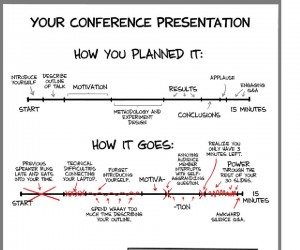Envisioning Your Department in 2025
Schedule:
- Background on scenarios, our process, website resources, and goals for this mini-workshop (10 minutes)
- Break into groups (see choices below) for Blue Sky discussions of departments in 2025–groups decide their key underlying drivers and create a broad brush story about a fictional or composite department in 2025 (25 minutes)
- Each group shares their key drivers and scenarios (3 minutes each — 12 minutes)
- Organizational assessment discussion- what are the key actions that these departments/schools would need to do in order to build toward the scenario (Curriculum, resource management, hiring, etc.) (13 minutes)
- Wrap up with final Q & A, thank you to all the students who helped build the website and facilitated the groups (10 minutes)
Groups:
- Technology disruption: Technology has disrupted both research methodologies and pedagogical practices. For research, to focus on a mix of methodologies is to buy in to technology. Attempts to innovate in both the classroom and research arenas has led to the adoption of rapid prototyping.
- Build a bigger/better brand: In a globalizing and increasingly competitive environment, programs chose to build on current strengths in order to develop a brand with competitive advantages that is known for signature programs (e.g., summer institutes), celebrity-named schools and awards, and unique degrees. In this future, programs make what they do clearer and/or better-known.
- Consortia model: The strength of connections will strengthen the collective. Building partnerships, whether they are interdisciplinary within a department, school, or university or cross-university and partnerships and alliances with other universities, or with industry will utilize collaboration, cooperation to make up for declining grant funding.
- Communication in context: The boundaries of the communication discipline shift and get more specialized in some cases and broader in others — e.g., to blur sub-disciplinary boundaries in areas such as LGBT studies, or create new disciplinary groups to better tackle environmental communication, terrorist communication, and health communication. Communication programs specialize in niche and localized topics.
It is critical that everyone work hard at imagining a world at least 10 years into the future–this is not easy but it removes current personnel, leaders, budgets, strategic plans, and political concerns from active consideration and from being viewed as “givens,” and instead focuses attention on underlying drivers of change and what might be possible. This allows more freedom for Blue Sky Thinking so we have chosen the year 2025 for this discussion. Although our time is short, we hope the concept is useful and that the participants can continue the process back in your departments/schools.
NOTE: The scenario development process itself typically takes place during a 1-3 day workshop. The length of the workshop depends on the size and complexity of the organization. Our process, however, begins long before the workshop occurs, with detailed interviews of participants, an online scenario writing process, building a customized website, and meetings with key stakeholders. The goal is for the workshop to facilitate the development of one or more compelling and plausible stories about their organization 10-20 years out into the future. Today’s Blue Sky workshop is designed to start these types of discussions about the drivers of change in higher education generally and in the field of communication more specifically. We are using only one element of our process to demonstrate the scenario approach.
About the USC Annenberg Scenario Lab: A research lab that does both basic research into sensemaking about the future and applied research into the organizational capacity for foresight and innovation using theories of storytelling, organizational change and knowledge networks (uscscenariolab.com).

